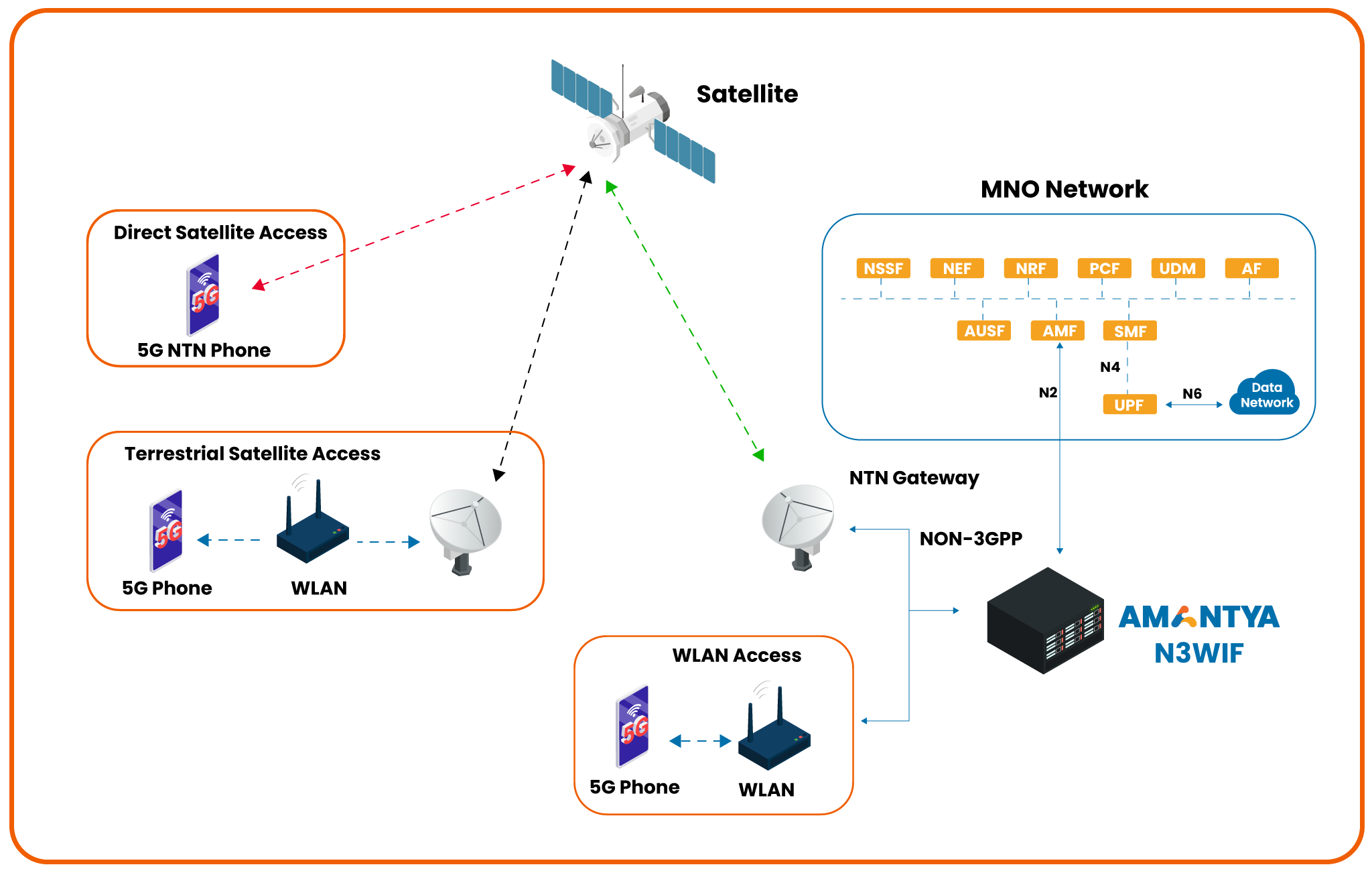N3IWF (Non-3GPP Interworking Function)
Enabling seamless interworking between 3GPP and non-3GPP access technologies
Download Brochure
Overview
In an increasingly interconnected world, smooth communication across different network technologies is crucial. Developed using a Service-Based Architecture (SBA) and based on the VPP and DPDK framework, Amantya’s Non-3GPP Interworking Function (N3IWF) is designed to seamlessly connect 3GPP and non-3GPP networks. Acting as a gateway, it allows non-3GPP access networks, such as Wi-Fi and satellite communications (SatCom), to connect to the 5G Core Network (5GC) via a common interface. The N3IWF translates protocols and signaling messages between 3GPP and non-3GPP networks.
The N3IWF enables the exchange of data, voice, and multimedia services between cellular networks and non-cellular technologies, including Wi-Fi, LoRaWAN, and satellite networks. It facilitates communication with satellite and non-terrestrial networks (NTN), expanding connectivity options for remote and underserved areas.


Key Features
-
Interoperability
Seamlessly connects 3GPP and non-3GPP networks, supporting diverse technologies and protocols. -
Scalability
Handles increasing traffic demands and evolving technologies without sacrificing performance. -
Security
Prioritizes data confidentiality and integrity with robust authentication and encryption. -
Quality of Service (QoS)
Optimizes resource allocation and minimizes latency, ensuring high service quality across networks. -
Flexibility
Configurable parameters and customizable settings adapt the N3IWF to specific network needs.